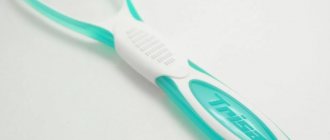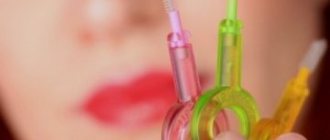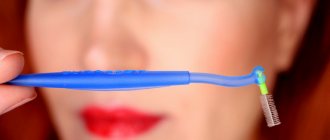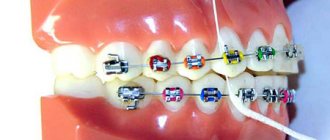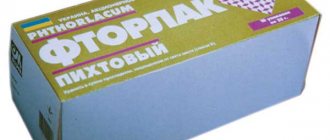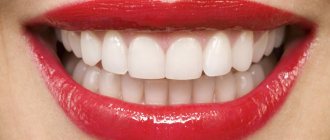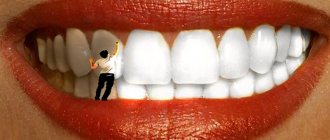Even babies are now aware of the need to brush their teeth. But toothpastes often contain a lot of harmful and hazardous substances : sodium lauryl sulfate, preservatives, antiseptics and antibiotics, abrasives and bleaches.
Fortunately, there is an alternative to industrial products - a natural and safe miswak stick that copes with oral hygiene without the use of toxic toothpastes .
What is miswak (sivak) for brushing teeth?
Miswak, or siwak, is a brush for cleaning teeth, which is a piece of a branch or tree root , split at the end like a brush. Traditionally, miswak is made from arak (mustard tree), but olive, orange, neem, and Pila (Salvadora Persian) wood are also used.
By the way! Sivak has been known in the East since pre-Muslim times, but does not lose its popularity even today. “Chewing sticks” are also in demand in the countries of Southeast Asia.
Where does miswak grow?
The tree from which miswak is made is called “Salvadora persica” (from Latin). In Arabic, the name of this useful shrub is “Arak”. Grows in subtropical and tropical climates. The “toothbrush tree” can be found in India, Pakistan, North Africa, and the Arabian Peninsula. This is a small shrub up to 5 m high. The bark is brown, with a pleasant smell. The leaves are edible, with a mustard flavor (which is why arak is also called mustard tree). The leaves are used in India as a green for vitamin salads.
Salvadora Persiana grows in desert and clay soils. Harsh growing conditions contribute to the accumulation of large amounts of biologically active substances in the plant. This is necessary so that the tree can survive in unfavorable conditions.
Stick composition
Miswak is a completely natural dental care product. These “magic wands” contain more than 25 natural ingredients that are beneficial for dental health :
- tannic acid;
- bicarbonate of soda;
- cellulose;
- essential oils;
- fragrant resins;
- alkaloids;
- mineral salts;
- fluorine;
- sulfur substances;
- silica;
- vitamin C;
- saponins;
- styrene;
- flavonoids;
- trimethylamine.
Important! Miswak is a 100% natural, natural teeth cleaner, it is simply a part of the plant.
Unlike conventional toothpaste, it does not contain any harmful substances such as sodium lauryl sulfate, parabens, propylene glycol, benzyl alcohol, dyes, fragrances, etc.
Restrictions for pregnant women and children
Miswak is allowed to be used during pregnancy and breastfeeding. The product does not affect the development of the child and does not contain allergic components. It is believed that miswak can affect the taste of breast milk, but this varies from person to person.
Sticks can be given to children from 5 months to chew. The product helps ease teething, relieve discomfort and relieve swelling. Parents should control this process; they should not give a miswak stick to their child unattended, as they may choke or injure their throat.
Beneficial features
The rich natural composition of the stick determines its excellent properties for maintaining dental health and treating them.
- Thanks to silicon, miswak helps whiten teeth and remove stains on enamel.
- Sulfur and galvanic substances prevent bacteria from growing on the gums and between the teeth.
- Trimethylamine in a stick will relieve inflammation and soothe pain during teething.
- Fluoride in the stick protects the teeth of adults and children from caries.
- Tannic acids and tannin relieve bleeding and sensitivity of the gums, heal wounds, have an astringent effect, protect against inflammation, protect against stomatitis and gingivitis.
- Bicarbonate of soda serves to effectively clean teeth, preserving their natural whiteness and shine, and gives freshness.
- Essential oils act as an antiseptic and pain reliever, prevent the formation of tartar and the appearance of putrefactive processes.
- Flavonoids serve to neutralize free radicals and protect against the destruction of cells and intracellular structures.
According to research by American scientists, the substances contained in the wooden stick are similar in their action to the usual antibiotics and antiseptics - triclosan and chlorhexidine, but unlike them, they do not suppress the beneficial flora of the oral mucosa .
It has been clinically proven that the use of miswak can reduce the number of pathogenic bacteria by up to 75%, the growth of Staphylococcus aureus and candida is suppressed, and the effect lasts up to 2 days .
For your information! When using miswak, it affects biologically active points in the mouth located at the border of the gums and teeth. Their stimulation has a positive effect on vision, vocal cords, eliminates lethargy of the body, and increases vitality.
Features of sivak
A toothpick is different in shape from a regular toothbrush, and therefore cleaning is somewhat different. The anterior crowns can be cleaned with the tip of a brush, but the lingual and palatal surfaces need to be brushed with the side bristles. The movements should be made standard, that is, sweeping, from the gum edge to the cutting surface of the crown.
There are dried and fresh siwak. Their difference is that fresh is easier to use, it causes less damage to the gums and is more beneficial for the oral mucosa. It tastes good, has a specific pungent odor, but neutralizes the unpleasant aroma in the mouth well. Fresh tree knots retain more beneficial properties, but they are more difficult to obtain and preserve, which is why dry twigs are more often used.
Dried miswak requires less storage conditions and has an almost unlimited shelf life. They must be used the same way. Dried sticks may taste unpleasant, but most of the beneficial properties are retained.
Miswak, which can be purchased in Russia, contains preservatives to extend its service life. A food ingredient, rowan extract does not affect the beneficial properties. The shelf life of siwak sticks is 2 months, in the refrigerator – 3-4 months.
Flaws
Along with the extensive list of advantages of miswak, it also has several disadvantages :
- It is difficult to clean the outer teeth and the inner surface of the teeth with a small brush .
- Also, due to the small area of the bristles, brushing your teeth will take longer than usual. Cleaning will take 5-10 minutes , as opposed to the usual 2-3 minutes when using a traditional nylon brush and paste.
- After using miswak, you will not have the usual “minty breath” as when using paste.
What's the catch?
The miswak stick has practically no contraindications.
It can be given to children from 5 months - of course, under the strict supervision of adults. You can brush your teeth during pregnancy and breastfeeding. Allowed to be used for any chronic diseases.
The only prohibition is individual intolerance to the acara tree, but it is extremely rare.
But miswak has some disadvantages: reviews talk about them in detail.
- Specific taste. People who have used siwak with a toothbrush admit: the stick tastes like horseradish. There is no need to be afraid: after hygiene procedures, your breath does not smell like horseradish. But it’s hard to forget this taste. On the other hand, many people like this taste and this is a rather subjective drawback.
- Inconvenient shape. Meswak is still not a flexible plastic brush, but an ordinary branch. It simply cannot penetrate into “hard-to-reach places,” so the back jaw and the inside of the teeth may remain uncleaned.
- Uneconomical. The wood brush itself is inexpensive, but it lasts only 2-3 weeks. And if you don’t take care of storage, then for an even shorter period.
Plus, chewing a stick won't get rid of bad breath. While fragrant menthol pastes can mask the smell for a while, neutral siwak will not do this. In addition, in most cases, the cause of the unpleasant odor is problems with the gastrointestinal tract, and only a visit to a gastroenterologist can solve them.
Sources:
- https://www.tauba.ru/lechenie-bolezni/sivak-i-ego-poleznyie-svoystva-dlya-zdorovya-polosti-rta.html
- https://kcdc.ru/rot/misvak-palochka.html
- https://osp-sakhalin.ru/uhod/sivak-dlya-chistki-zubov.html
- https://DrZubastik.ru/chistka-zubov/palochka.html
- https://CreateSmile.ru/miswak/
How to use it correctly?
For cleaning, sticks 12-17 cm long and 0.8 - 1.5 cm thick , made from branches or roots of the arak tree or Salvadora Persian, are used. Dental sticks are made less frequently from other trees.
Freshly cut sticks are sold packaged in vacuum packaging, in which they remain fresh for a long time.
A good quality miswak should be flexible, not dry, and have a pungent, spicy woody odor reminiscent of horseradish or anise. The thinner the siwak, the softer its bristles will be .
Before use, remove the sticks from the packaging, wash them with warm water and clear one end of the bark. This can be done with a knife, teeth or just nails. The cleaned end must be split to form bristles . To do this, you need to chew the stick, or also use a knife. The resulting brush can be used to clean your teeth and tongue.
The inner surface of the teeth should be properly cleaned with the side of the brush, as if sweeping away plaque from the teeth. The movement is reminiscent of removing excess paint from a brush on the edge of a can.
Attention! Do not press hard on the stick so as not to damage the enamel and gums.
Miswak should be used in the morning, evening and every time after meals . After use, the stick should be rinsed with water. If the miswak's bristles become sparse, you need to trim the tip and make a new brush. Usually the stick lasts for 1 month of use .
What is the price
The cost of a natural toothbrush varies depending on the length and thickness. A small stick 15 cm long costs about 150 rubles. They are sold in vacuum packaging individually. Some manufacturers add flavoring - lemon, mint.
This is interesting: Teeth whitening trays with gel: an overview of the advantages and disadvantages
Sivak Sewak al-Falah - made in Pakistan, 15 cm long, sold in vacuum packaging one piece at a time, cost about 150 rubles.
The Al-Khaleej branch is a black stick, does not require the use of toothpaste, costs 80-100 rubles.
Sivak Khair - made in Pakistan, has a length of 15 cm, cost - 90-120 rubles.
At the same time, you can purchase a case for convenient storage. You should not immediately switch to cleaning your mouth with such a stick. It is better to use it between regular teeth brushing, and when you have the skills to clean each tooth, then you can switch to the siwak stick. You can’t do without consulting a dentist and a specialist’s opinion on this matter.
FAQ
1. Is it possible to give a stick to children and at what age ? A child can be given a stick if he has at least one tooth erupted. This will help him get used to the need for dental care; in addition, chewing a stick can relieve teething pain.
2. When is the best time to trim used fibers ? It is recommended to trim the used brush after 2-3 cleanings.
3. How long does it take to chew miswak ? The stick should be chewed until the fibers separate from each other and a soft brush is obtained. Usually requires 5-10 pressings with chewing teeth.
4. Is it possible to use sivak during pregnancy and breastfeeding ? Pregnancy and lactation are not a contraindication for the use of miswak. The stick contains no substances that can cause allergies in the child or affect the contractility of the uterus. There is an opinion that during lactation, mothers need to exclude from the diet foods that have a pungent and strong odor. Miswak, of course, has a specific smell, but it is not eaten and is unlikely to affect the taste of milk.
5. Will the product damage tooth enamel ? Miswak does not contain abrasives and is not capable of damaging enamel.
6. Should you just brush your teeth with the toothbrush or add toothpaste ? When using miswak, there is no need for toothpaste, since all the elements beneficial for dental health are already contained in the stick itself.
What else is sivak useful for?
As already mentioned, miswak is mentioned in the hadiths of the Prophet. But this is far from the only description of the beneficial properties of a mouth cleaning stick. Thus, the great scientist of Islam Ibn Qayim in his work “Medicine of the Prophet” described in as much detail as possible the beneficial properties of siwak. Ibn Qayyim identified the following features of arak wood:
- prevention of caries, periodontitis;
- treatment of gum and dental diseases;
- high-quality cleaning of the entire oral cavity;
- refreshing effect;
- wound healing;
- antibacterial effect;
- decreased salivation;
- getting rid of bad breath caused by poor condition of teeth and gums;
- prevention of scurvy;
- improving vision by influencing the nerve endings in the oral cavity associated with the eyeballs;
- removing stains on enamel, tartar (it is extremely difficult to remove tartar using a toothbrush and paste, since most of it is concentrated in a hard-to-reach place, on the neck of the tooth);
- treatment of cords, voice restoration;
- improving the condition of the digestive system, treating the stomach and intestines, normalizing stool;
- general strengthening and tonic effect;
- return of mental clarity, acceleration of thought processes, getting rid of lethargy and apathy;
- positive effect on the male reproductive system.
In other words, miswak is a true storehouse of health. A person who uses this amazing remedy will strengthen both body and soul; he will not need doctors.
Flaws
If you have braces installed, you cannot use a wand. Reason: In preparation for use, the miswak is “fluffed,” that is, one end is separated into fibers. These woody “threads” slide along the front and back surfaces of the teeth, also getting into the interdental spaces and cleaning out food debris. If the thread gets stuck in the braces, it can damage them. It is difficult to extract the fibers yourself. You'll have to go to the dentist.
The second risk group is people with hypersensitive teeth. They have thin enamel that wears off with rough impact. And the next stage is caries.
Difficulties also arise for those who took a stick that was too hard and poorly prepared it for “work.” Sharp villi damage soft tissues when pressed. As a result, instead of benefit, we get harm: small wounds are applied to the gums, it bleeds, and if an infection occurs, the first symptoms of gingivitis or periodontitis will appear.
Be especially vigilant if you are over 50 years old. At this age, periodontitis is common and leads to pocket formation, halitosis and tooth loss.
Sivak, as we see, is not a panacea for oral diseases. Therefore, remember to be careful when using it. In addition, some complain that it is difficult to reach the back row of teeth with a stick.
Contraindications
The only contraindication to the use of Sivak is individual intolerance. It is undesirable, although possible, to use it when wearing braces and skyes (dental jewelry), since the bristles can get stuck in the structures.
There are no restrictions during pregnancy and breastfeeding. When brushing your teeth with mustard tree root, no harmful components enter breast milk and blood.
Consumer Reviews
Below are some customer reviews. If you have something to say, leave your feedback in the comments below the article, it will be useful to our readers.
Succumbing to the advertising of an online store, I bought a stick of miswak “to try”, fortunately the price was low. I opened it, washed it with water, chewed it, everything according to the instructions. The hot water made the bristles soft and brushing my teeth was pleasant. I was surprised at the pleasant feeling of cleanliness on my teeth, there was no plaque, and this despite the fact that I just cleaned them with a branch, without any product! I liked the effect, I will continue to brush my teeth with this stick!
I bought a miswak on the advice of a friend. I liked that there was no pronounced taste or smell, there was a slight bitterness, like cigarette smoke. It cleans well, but it takes more time than using a regular brush. You can leave it for evening cleaning, or take it with you and use it throughout the day, and you don’t have to carry the paste with you.
Real life application
Reviews from consumers who have been using Miswak in everyday life for several months now.
I was recently in Egypt and bought myself a couple of these products. To be honest, it was only there that I first heard that such a thing existed. I was told in detail how to use Miswak and how to store it. I didn’t believe that some kind of stick could help whiten my teeth, which used to cost a lot of money. But I decided to try it and was pleasantly surprised. Within two days, improvements became noticeable, and an extraordinary feeling of cleanliness appeared in my mouth. Next time I will definitely buy myself a few more packs.
Marina, 38
I am probably one of the few who have known about this product for a long time and use it regularly. Once upon a time, I read a long article about it, learning about its extraordinary properties. Everyone in our family brushes their teeth this way. When I run out of sticks, I buy a special paste containing Sivak. I must say that visiting the dentist in our family is a rare occurrence.
Nina, 31
Great natural product. No toothbrush is needed to keep your teeth clean. Personally, I carry Sivak right in my purse, but at any time they can brush their teeth after eating, even at work.
Larisa Petrovna, 46
Useful video
From this video you will learn what a miswak is for and how to use it correctly:
To date, many studies have been conducted confirming the benefits of using miswak for the oral cavity. The active natural substances it contains protect teeth from diseases, the stick gently removes plaque and tartar from teeth, and is very convenient and pleasant to use .
In addition, after serving its life, the stick does not pollute the environment, as it is 100% natural. This is probably why miswak is so popular among people who care about their health, who prefer everything natural to synthetic and who care about the environment.
How to choose a quality miswak
The sticks may have a salty taste if the plant grew in brackish soils. Such a miswak may even have a white coating, but at the same time it is of quite high quality. A sweet taste indicates the addition of synthetic ingredients to increase shelf life. It is better to buy siwak without additional preservatives. The natural substances of the plant are quite enough to protect against spoilage. Provided that the miswak is of high quality and packaged fresh. It is also not recommended to purchase siwak with additional flavors, for example, mint, since in this case synthetic flavors are used.
Thin sticks (up to 1 cm in diameter) are more tender, easier to chew, and more juicy. They are best used for painful gums that are prone to bleeding. Thick ones have hard fibers, so this brush has the best whitening effect. But its coarse fibers penetrate harder into hard-to-reach places, making it more difficult to clean the side surfaces of the back teeth.
A good siwak has a strong, pleasant aroma. The stick should not be too thick or too long. The average length is 15–20 cm. This miswak is best suited for comfortable use.

